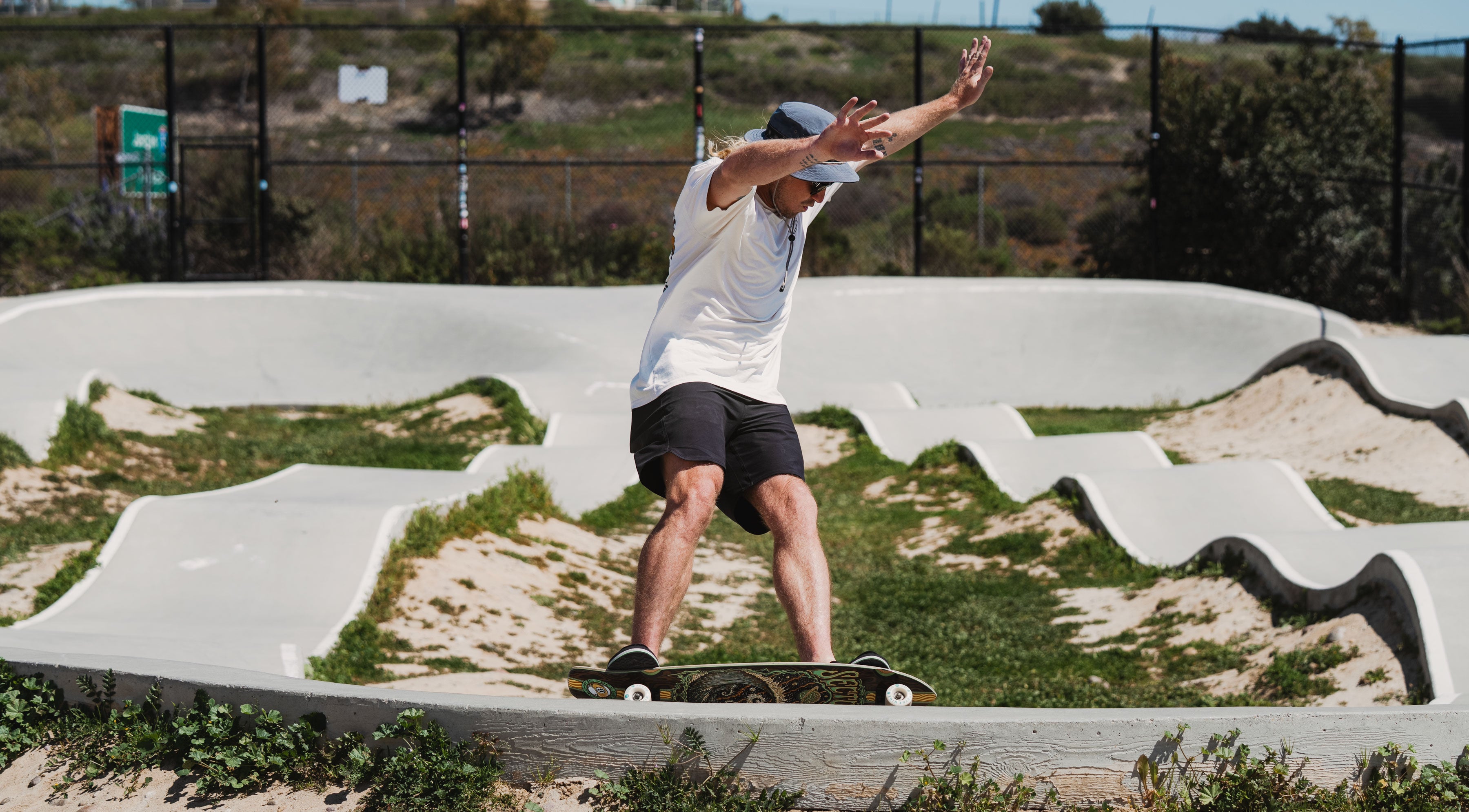Top 5 Skateboards for Kids Learning to Ride (Ages 4–10)

There’s nothing like watching a young skater push off for the first time. Skateboarding is more than rolling on four wheels—it’s confidence, creativity, and pure fun. But for younger kids, the right setup matters. A complete skateboard that fits their skill level makes it easier to find balance, roll with control, and enjoy a smooth ride from day one.
We’ve rounded up the top 5 skateboards for kids learning to ride (ages 4–10). Whether you’re picking a smaller board for a young child or a bigger board for older skateboard beginners based on riding style, here’s how to choose the right setup for children as they grow into skating.
Example Skateboards for Kids:
-
For Ages 4–5 (First Ride):
Sector 9 Bambino Skipper Cruiser — A small cruiser tailored for smaller feet, offering great balance and encouraging that smooth ride for brand-new riders. -
For Ages 6–8 (Progressing):
Sector 9 9er Mini Fractal Skateboard — A smaller board that plays big in versatility—perfect for cruising, carving, and even dabbling in small tricks. -
For Ages 9–10 (Ready to Rip):
Sector 9 Cascade Ninety Five Cruiser — With increased performance and deck size, it eases the transition to full-sized boards while still maintaining maneuverability and classic S9 style.
1. The First Ride: Skateboards for 4–5 Year Olds
For younger riders, stability comes first. A beginner skateboard for skateboards for five year olds or even skateboards for 4 year olds should feature a shorter skateboard deck with soft wheels that roll easily over rough surfaces. This combo offers more control and a smoother ride, helping little ones stay upright.
At this age, parents should focus on safety, too. A skate helmet, knee pads, and elbow pads are must-have skate accessories for every young child stepping on a board for the first time.
2. The Progression Ride: Skateboard for 6-Year-Olds
By six, kids usually want to explore past the driveway. A skateboard for 6-year-olds should still feel stable but allow for a bit more maneuverability. Look for complete skateboards with quality grip tape, softer skateboard wheels, and strong trucks that can handle turns and small bumps.
This is also when kids start noticing board graphics and color. Letting them choose a design they love makes them feel like real skaters, boosting confidence as they start skating with friends.
3. The Confident Cruiser: Skateboards for 7–8 Year Olds
At seven or eight, coordination really kicks in. A skateboard for 7 year olds or skateboard for 8 year olds should balance control with performance. A slightly wider skateboard deck paired with mid-size skateboard wheels makes these boards versatile enough for cruisers around the neighborhood or even early sessions at a skate park.
This is a great age to let them start learning simple tricks—ollies, kick turns, or rolling off curbs. With the right setup, their smaller feet can find the sweet spot on the deck, giving them better control and a safer path to progression.
4. The Park Explorer: Skateboards for 9-Year-Olds
By nine, most kids are ready to push limits. Skateboards for 9-year-olds often look similar to full-size setups, just scaled down. A youth skateboard in the 7.5–7.75 inch range with durable grip tape and balanced skateboard trucks is perfect for hitting flat ground or trying ramps.
If your kid is heading to a skate park, make sure they’re rolling with proper safety gear. A solid helmet and protective pads go a long way in keeping the stoke alive while preventing injuries.
5. The Ready-to-Rip Ride: Skateboards for 10-Year-Olds
By age ten, children are ready for a bigger board with more performance features. A skateboard for 10-year-olds should be close to adult size—around 7.75–8 inches wide—but still designed with younger riders in mind.
This is the age where they’ll want a board that handles real skating: rolling smoothly over rough surfaces, landing tricks, and keeping up with older riders. Having a skate tool on hand makes it easy to adjust trucks and dial in their board for maximum maneuverability.
Final Thoughts
The best children's skateboard isn’t about price tags—it’s about matching the right complete skateboard to your kid’s skill level and age. For younger kids, a smaller board with soft wheels gives them confidence and a smoother ride. For older skaters, a bigger board unlocks more performance, maneuverability, and room for tricks.
Above all, don’t forget the essentials: a snug skate helmet, quality grip tape, and protective pads like knee pads and elbow pads. With the right setup, your young skater will be rolling, smiling, and progressing in no time.
Because skateboarding isn’t just about the board—it’s about freedom, style, and the joy of every single push.

